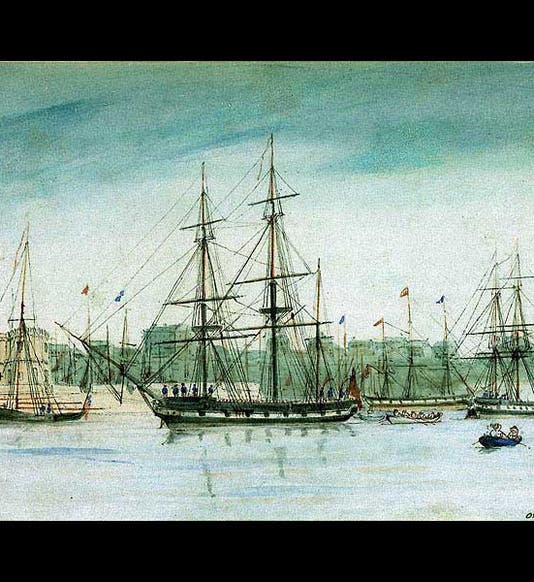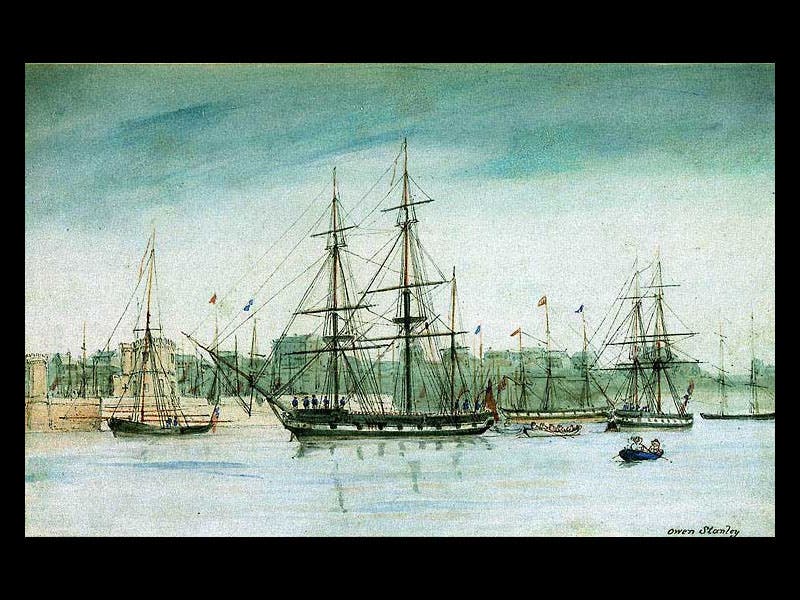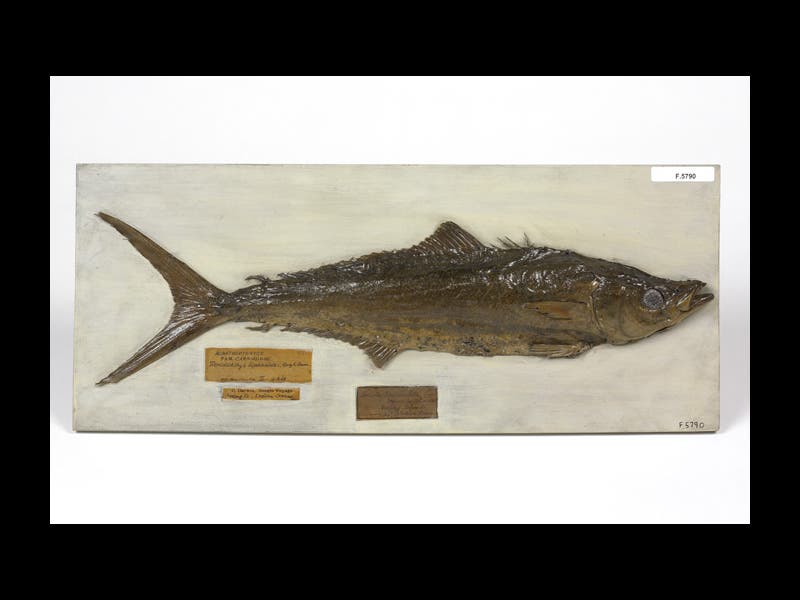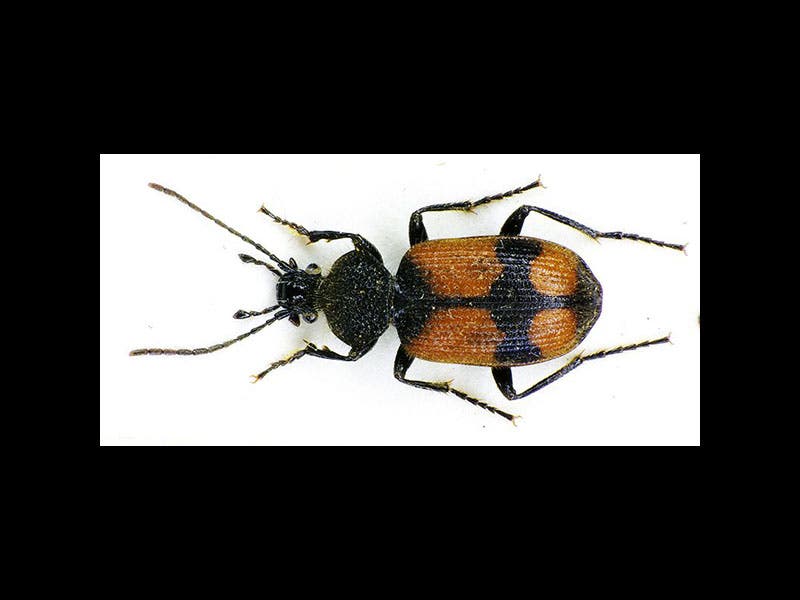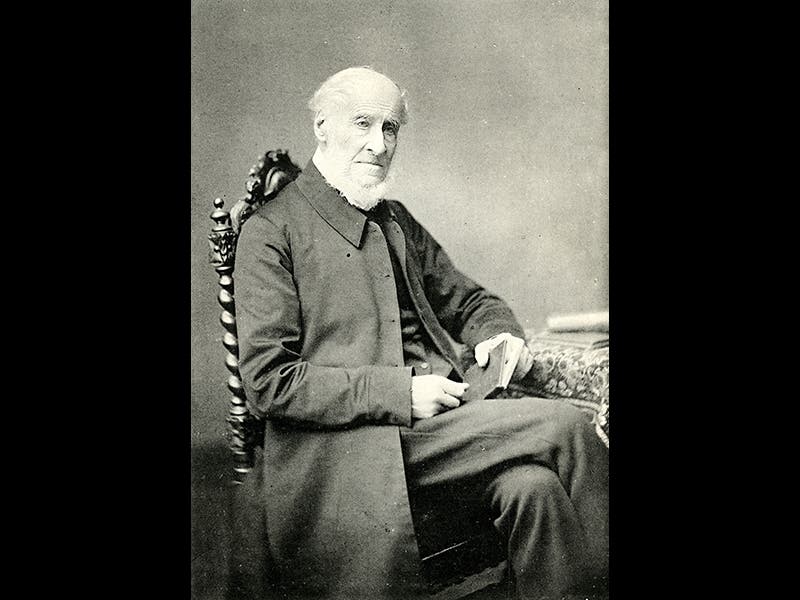Scientist of the Day - Leonard Jenyns
Leonard Jenyns, an English naturalist and clergyman, was born May 25, 1800. Although Jenyns had a perfectly respectable career on his own, he is most often remembered for the three instances in which his life intersected that of Charles Darwin. First, Jenyns was the man who turned down an offer to accompany Captain Fitzroy as companion-naturalist on the voyage of HMS Beagle (first image), creating the opportunity for Darwin to do so instead. Second, when Darwin returned from the Beagle voyage in 1836 and was looking for experts to analyze and describe his collections, he settled on Jenyns to describe his fish specimens. The fish volume, part 4 of the Zoology of the Voyage of the Beagle, written by Jenyns and edited by Darwin, appeared in 1842, and we have a copy (indeed, we have the entire 5-volume set) in our History of Science Collection. The second image above is an actual fish brought back by Darwin and described by Jenyns, as preserved at Cambridge. The third image shows a printed image of a Falkland Islands fish, in Jenyns’ Fish volume of the Zoology set.
But the most memorable interaction between Darwin and Jenyns took place on Oct. 17, 1846, when Darwin wrote a letter to Jenyns, describing an incident that had occurred to Darwin 18 years earlier, when he was a student at Cambridge: "I must tell you what happened to me on the banks of the Cam in my early entomological days; under a piece of bark I found two Carabi [!a!] & caught one in each hand, when lo & behold I saw a sacred Panagaeus crux major [!the!]; I could not bear to give up either of my Carabi, & to lose Panagaeus was out of the question, so that in despair I gently seized one of the Carabi between my teeth, when to my unspeakable disgust & pain the little inconsiderate beast squirted his acid down my throat & I lost both Carabi & Panagaeus!" Twenty years later, Darwin re-recounted the story with some small changes in his Autobiography, and it is now probably the most famous of all the stories we have of Darwin's pre-Beagle days (there are not in fact very many). In his Autobiography, Darwin leaves the three beetles unidentified, so editors are denied the privilege of commenting that the Crucifix beetle is quite scarce in England, and none had been seen in Cambridge since the 1950s until one was spotted in 2008. It is quite a handsome creature, as you can see (fourth image).
Most portraits of Jenyns show him as an older man (fifth image); we have not been able to find one that shows him as he would have appeared at the time his Fish volume was published.
Dr. William B. Ashworth, Jr., Consultant for the History of Science, Linda Hall Library and Associate Professor, Department of History, University of Missouri-Kansas City. Comments or corrections are welcome; please direct to ashworthw@umkc.edu.

